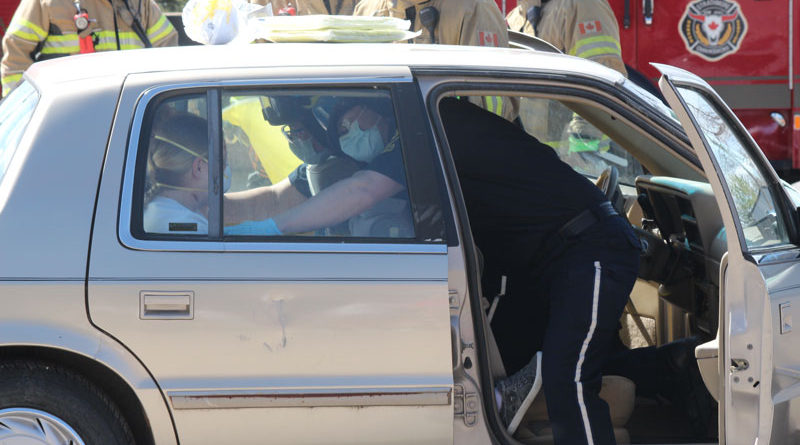SADD demonstration returns for SHS students
By John Watson Local Journalism initiative Reporter

Photo Courtesy of Sharline Visser
With the school year nearing its conclusion, Strathmore High School (SHS) is aiming to raise awareness about impaired driving for its graduating class.
Sharline Visser, a teacher at SHS and one of the advisors for the Spartan Council, helped to organize a Students Against Drunk Driving (SADD) demonstration with local first responders.
The school has been unable to host SADD demonstrations for the past few years due to the impacts of the COVID-19 pandemic, but with classes having returned near to normal, Visser said the school was eager to start up the program once again.
“We wanted to start an initiative again. In regard to the simulation, we haven’t done it for many years so we thought it was a good way to get that community involvement back and have some interaction with the fire department, RCMP and EMS services,” said Visser who had begun organizing the event for students roughly two months prior to the demonstration in order to make sure local police and firefighters were able to participate.
Five drama students played victims in a mock car accident while cosmetology students did the victims makeup to make it look as though the actors had really been in an accident.
“We had the car in the front parking lot and we called our Grade 12 students down and they were able to watch as the first responders interacted with that vehicle,” said Visser. “The driver of the vehicle went through a roadside sobriety test (and) he did a breathalyzer, so they were able to see the ins and outs of what would actually happen if they were in an accident.”
Visser added that young drivers are among the largest demographic to get pulled over by police and tests such as breathalyzers are becoming more and more common.
The aim for programs such as SADD is to educate students and young drivers not to drive under the influence and show them the potential impacts of such actions.
“We wanted them to really be thinking about what the further impacts of impaired driving would be, not only beyond just the driver of the car, but (also) the victims,” said Visser. “We also think that with first responders, they should be people that can be approachable by students and not just someone to be feared as well.”
Visser added that the students who participated were very curious and were actively asking questions of the responders who were demonstrating.
Visser said following the success of bringing the program back, it is something the school will be looking to once again begin doing in regular intervals for students.
